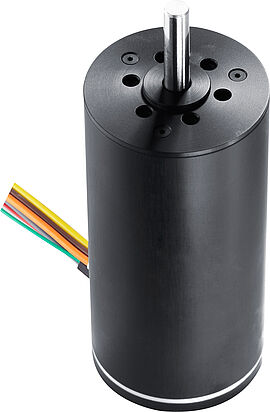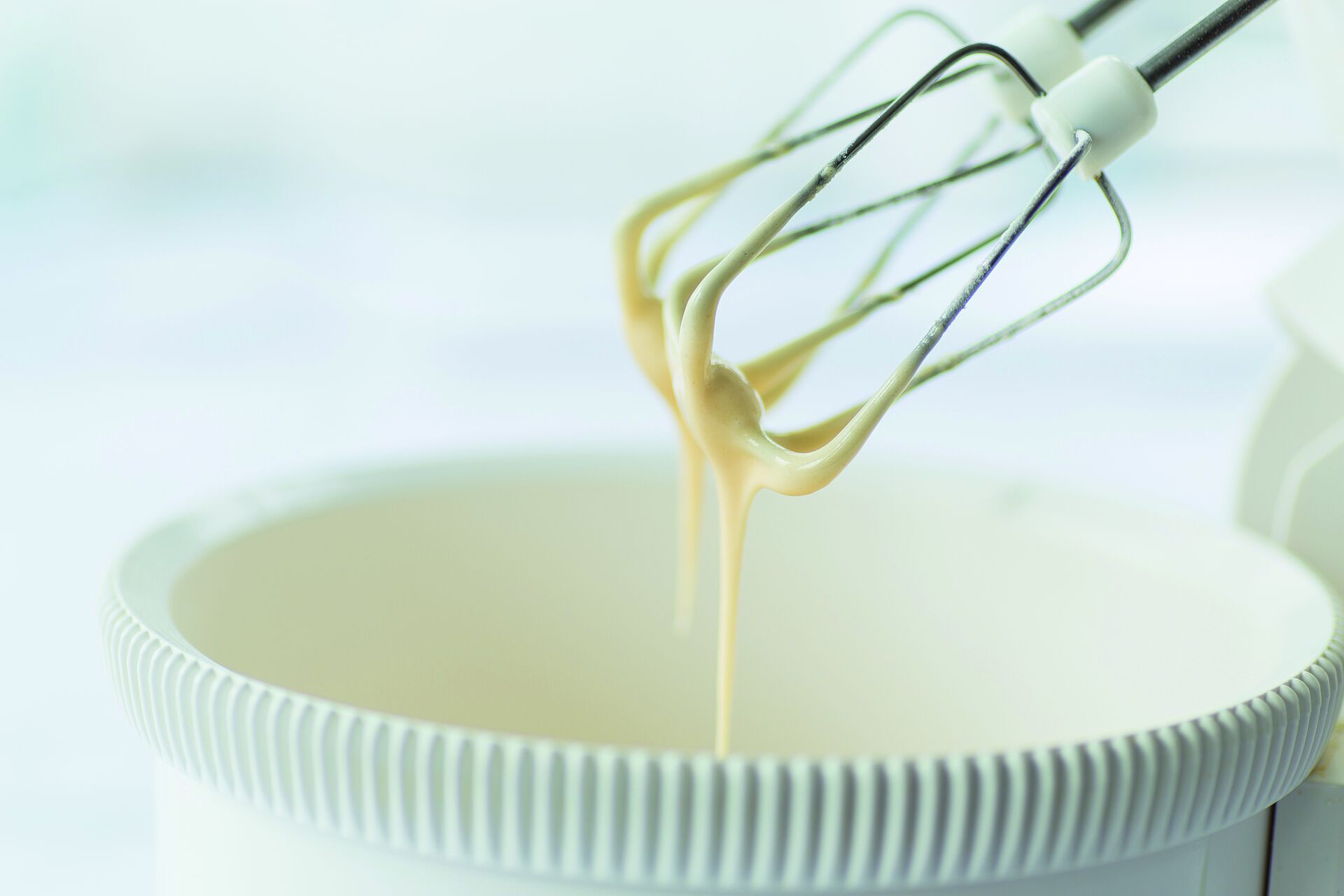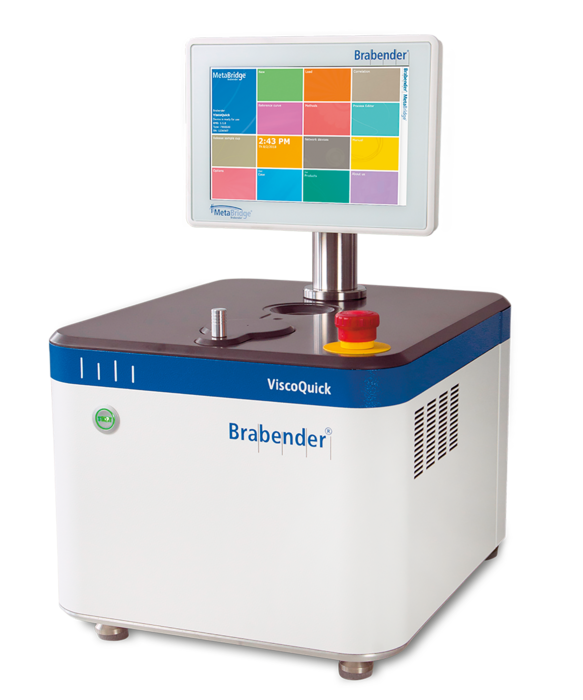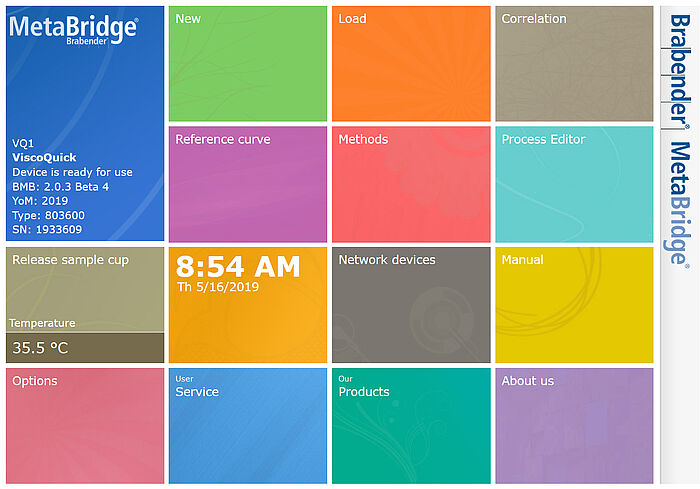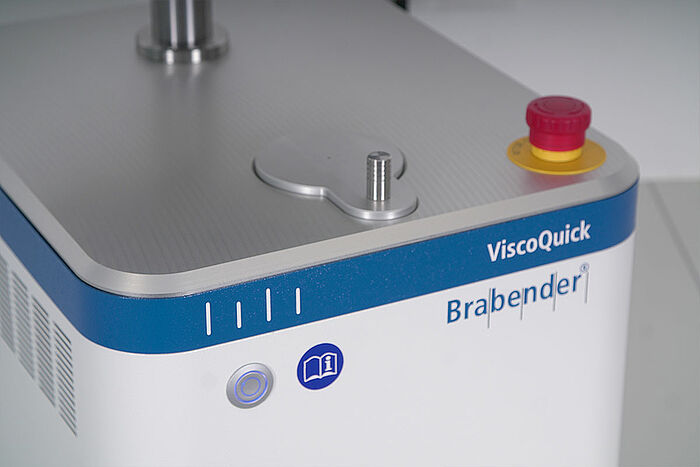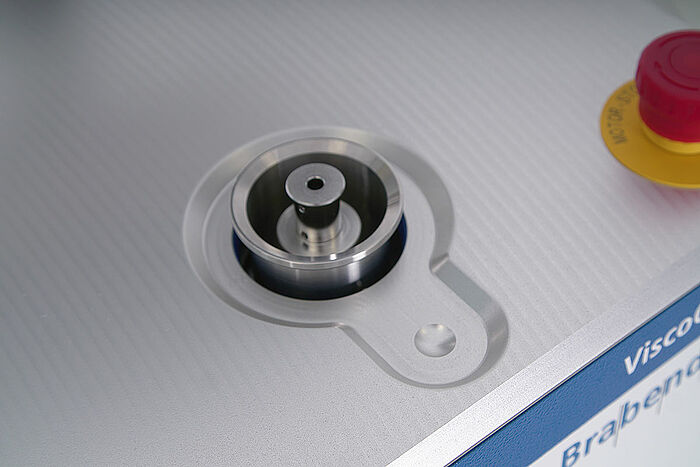With many products, viscosity is an important quality feature or is decisive for their workability in the production process. Viscosity measurements are therefore useful in many areas, in goods receiving as well as in quality control, during the optimisation of recipes or even between individual production steps. To ensure that these analyses take as little time as possible and can be completed with only small sample quantities, Brabender developed a new rotational viscometer, the ViscoQuick. Depending on the sample material, the device is able to complete a measurement in approximately 10 minutes. And can do so with just 5 to 15 grammes of sample material (plus approximately 100 to 110 g of solvent).
The viscosity characteristics of a wide range of materials are measured as a function of temperature as well as gelatinisation properties – such as of starch. The integrated heating/cooling function controls the temperatures for various applications. The reusable stainless-steel measuring pot is suitable for both acids and bases.
The measurement system is controlled via the MetaBridge software; the measurements can be directly evaluated and graphically depicted. The software is web-based and networks not only the Brabender devices and their measurement results but also their users. Multiple users can log in simultaneously and conveniently exchange their data – on PC/Mac, tablet or smartphone.
“Located underneath the measuring pot containing the sample is a motor which drives the paddle”, says Oleg Krawez, system architect at Brabender, as he describes the principle function of the new rotational viscometer. “If the viscosity of the sample changes, the torque of the drive also changes while maintaining the same speed. If, for example, starch gelatinises and, thus, the paddle encounters more resistance, the torque increases as well.”
Linear speed/torque ratio
To determine the changes, the torque is measured at the second shaft end of the motor. As a result, the motor becomes a virtual sensor, since viscosity can be determined from the torque. The speed-torque curve of the motor must therefore be as linear as possiblfor use in the ViscoQuick, particularly at low speeds. Depending on the analysis task, the speeds are between 0 and 500 revolutions per minute. It was therefore necessary to find the right drive.
“After extensive tests, we decided on the brushless DC-servomotor from the FAULHABER line”, Krawez continues. “The motor of the 4490 … BS series satisfies our requirements in every regard; furthermore, we have already had good experiences with the drive specialists from Schönaich.”
Motor
The 2-pole servomotor is a three-phase external rotor motor with wide speed and torque range. The integrated linear Hall sensors enable the required low speeds. Thanks to its ironless design, the motor operates cogging- free, with an absolutely linear relationship between load and speed, current and torque as well as voltage and speed and offers a highly sensitive current/torque behaviour. These motor characteristics are reflected in the measurement results. Viscosities can be determined with an accuracy of up to 0.5 cmg in a measurement range from 0 to 2,500 cmg.
Long-lasting and compact
Other important requirements on the drive were longevity and compact dimensions. After all, the motor needs to function reliably over the entire lifetime of the device as well as be easy to integrate. The brushless servomotor convinced in both regards. Due to the electronic commutation, its service life depends mainly on that of the motor bearings. Here, highly precise pre-loaded ball bearings are used which have proven their reliability in a wide range of application areas.
At the same time, the very compact dimensions of the 282 watt motor – measuring just 44 mm in diameter and 90 mm in length – were a perfect fit in the ViscoQuick’s limited installation space, as the measuring device itself is designed to be very space-saving. “We were, therefore, very happy that FAULHABER also has a suitable, space-saving controller in their product line with the MCBL 3006”, says a pleased Krawez. With its dimensions of 58 mm by 65 mm, the footprint of the controller, which is perfectly matched to the motor, is the size of a credit card; in terms of height, it measures only 27 mm. It communicates with the higher-level control system of the viscometer via an RS232 interface; actuation is also possible via CANopen.
The combination of brushless DC-servomotor and matched controller has proven effective in the Visco- Quick. Brabender also uses the same solution in other measuring instruments, such as in the Amylograph-E, which supplies a reliable and reproducible picture of enzyme activity (alpha-amylase) in flours and grains. Here, too, changes in torque are measured and are automatically recorded in an amylogram.
Products
